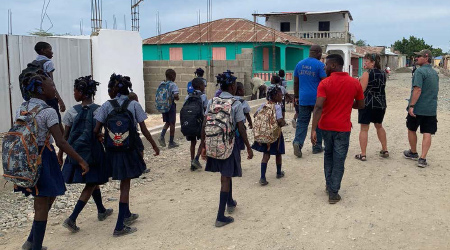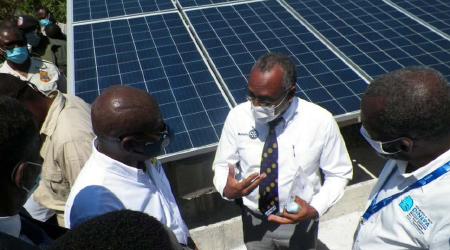DELIVERY MODELS
The hardware portion of any WASH system is critical to improving a society’s access to clean drinking water, sanitation and, by extension, hygiene. But managing, operating and maintaining a system is equally important for that system to be sustainable. An operational model has been developed to deliver new or improved infrastructure and systems that would satisfy both these community needs. The strategy that applies to either new or improved systems is similar, although the implementation approach for new infrastructure requires some additional steps. There are several parallel tracks to achieving a successful project. The responsibility of making any project work has to link sanitation to potable water supply with training in hygiene both for the sake of holistic improvements and to preserve water quality and improve public health. Similarly, any project environmental impacts should be minimized or mitigated.
With its partners, HANWASH embraces a set of guiding principles for approaching improvements, summarized with the acronym “FRAPE,” that applies to any HANWASH Hardware Delivery Model.
All HANWASH water projects, wells and springs must be:
- (F)unctional – sufficient water supply and metered for accountability
- (R)esponsibly managed and sustainable – revenue positive with solar or non-fuel centered pumping
- s(A)nitation – a core component ensuring everyone has access to a latrine or toilet
- (P)otable – fresh water, free of E. coli or other pathogens, or chlorinated to preserve level of disinfection
- (E)nspekte (inspected) – regularly monitored and evaluated and tested for functionability
STEP-BY-STEP OPERATIONAL MODEL FOR DELIVERY OF INFRASTRUCTURE AND SYSTEMS
Commune Selection
Commune Action Plan
Engineering
Implementation
In anticipation that many local officials will be interested in improving water systems in their communes, the selection of pilot communes could be highly political. To avoid unnecessary conflict, the HANWASH process has been designed to be as objective, logical and transparent as possible. Steps are outlined clearly to all involved, and to the extent possible, accepted by all. Ongoing outreach and early involvement of HANWASH champions, community and local leaders and government representatives are key to making this happen.

Haiti is divided into 10 geopolitical areas called departments, and each department is divided into communes. There are 144 communes in the country. The HANWASH strategy is to target individual communes, which breaks down the scope of the program into manageable parts, and to work with local communities to create an action plan for each commune. The action plan provides a blueprint for developing infrastructure and an ongoing management structure within each commune, so that as close to 100% of the population as possible will have clean water access within 500 meters of their homes and that, at a minimum, each household has a latrine.
The first step in creating a plan is to determine the community’s needs by conducting a survey to identify what parts of the communal population do not have access to potable water. The second step is to determine the probability of successfully finding an adequate supply of water in these areas. With that information, a commune action plan can then be created as to how to best develop that access, whether with borehole wells, a piped water system, a neighborhood hand pump or kiosk, or other means such as water filters or rain catchment systems. A plan is then created in collaboration with the mayors and other community leaders, as well as representatives of DINEPA and any other WASH actors within the commune willing to collaborate.
Engineering can be broken into several steps itself, each preceded by distributing Requests for Proposals (RFPs). RFPs will follow terms of reference so as to be consistent with any rules of procurement of HANWASH, DINEPA or other partners.
- Concept Development – Hydro-geologic description, water source availability and quality, volume/recharge, and topographic data, including land use and ownership
- Estimate software costs for various alternatives – operations, maintenance, management
- Develop preliminary plans for alternative facilities
- Engineering Estimate – both capital costs and total operational cost per gallon of various solutions based on preliminary plans, resulting in an estimate of costs per household
- Select a preferred alternative and finalize both software and hardware designs
Once a final design has been developed and funding for implementation is in place, parallel tracks will again be pursued for both the software and hardware components. On the software side, social marketing and sanitation marketing must be pursued if a project is to be successful. For the hardware, proposals for project management and bids for construction will be sought following procurement guidelines. Once a project manager and contractor have been selected, the project can be constructed. The entire management plan, including monitoring and inspections, will be implemented in its entirety.




